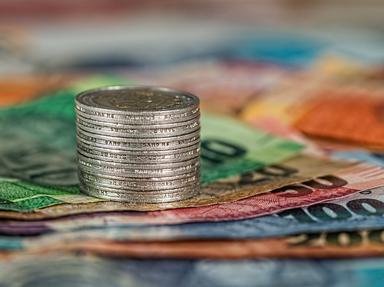Quiz Answer Key and Fun Facts
1. During the tenure of the Weimar republic hyperinflation was a huge economic and financial problem. The inflated currency was replaced with a new one introduced in late 1923 under the great influence of the maverick politician Gustav Stresemann. What was the name of this currency?
2. What was known in Weimar Germany as the "security mark" was discontinued as the main legal tender in what year?
3. After August 1924 and the official end to the "security mark", the Reichsmark became the main legal tender in Germany. How many Reichspfennigs (the subunit) constituted one Reichsmark?
4. During the introduction of the Reichsmark in 1924, the authorities decided upon what materials to make each particular denomination out of. What material were the 1 and 2 Reichspfennig coins made of?
5. During the period 1927 to 1933, the one Reichsmark coin underwent transformation and that included changing the material used to create it. What was the one Reichsmark coin made of before the change and what was the material after the change?
6. Which of the following creatures was prominent on the Nazi Reichsmark currency?
7. The 100 Reichsmark note was introduced in 1935 and was produced until the final days of World War II in 1945. What is the name of the man who was featured on the note?
8. What central authoritative body were responsible for the minting and circulation of currency during the Third Reich?
9. The Reichsmark was discontinued after a reasonably long spell as the main legal tender. It was discontinued after Hitler's suicide and the fall of the Reich, but, in what year?
10. After the decline of the German Reichsmark, both East and West Germany received a new currency. West Germany received and utilised the Deutsche Mark, but, what currency was implemented in East Germany?
Source: Author
jonnowales
This quiz was reviewed by FunTrivia editor
ozzz2002 before going online.
Any errors found in FunTrivia content are routinely corrected through our feedback system.
